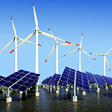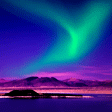- Home >
- Our Actions >
- Ambassador report
11
Comments
Urban Heat islands, causes, consequences and control measures |
|---|
|
by Sujan Adhikari | 19-08-2017 19:05
|
|
Urban Heat Island (UHI)
An urban heat island (UHI) is an urban area or metropolitan area that is significantly warmer than its surrounding rural areas due to human activities. The temperature difference usually is larger at night than during the day, and is most apparent when winds are weak.UHI is most noticeable during the summer and winter.
The main cause of the urban heat island effect is from the modification of land surfaces. Waste heat generated by energy usage is a secondary contributor. As a population center grows, it tends to expand its area and increase its average temperature.
UHI in Nepal The topic is new for Nepal and most of the developing countries. The study carried out during the research in Kathmandu showed the presence of urban heat island affect and its growing trend. How Do Heat Islands Form?When it comes to coping with heat waves, our own cities are conspiring against us. Road surfaces, pavements and buildings all contribute to keeping urbanized environments three to four degrees hotter than surrounding non-urbanized areas. The urban heat island effect occurs because the dense dark surfaces such as bitumen on roads and building materials used in cities accumulate and store heat during the day and then release it at night.
Heat islands form as vegetation is replaced by asphalt and concrete for roads, buildings, and other structures necessary to accommodate growing populations. These surfaces absorb—rather than reflect—the sun's heat, causing surface temperatures and overall ambient temperatures to rise. Displacing trees and vegetation minimizes the natural cooling effects of shading and evaporation of water from soil and leaves (evapotranspiration).
Tall buildings and narrow streets can heat air trapped between them and reduce air flow. Waste heat from vehicles, factories, and air conditioners may add warmth to their surroundings, further exacerbating the heat island effect. Other contributing factors to the heat island effect include:
UHI control measures Not all cities have a distinct urban heat island. Mitigation of the urban heat island effect can be accomplished through the use of green roofs and the use of lighter-colored surfaces in urban areas, which reflect more sunlight and absorb less heat. One of the simplest solutions to reducing the urban heat island effect is to provide more shade, with trees. But tree planting has its limitations: trees can't be planted in the middle of roads, they can?t necessarily be planted on private property, and there are also potential issues with having too many trees Another approach that can cut down on heat absorption is to consider different surface materials for roads and pavements. One alternative is green roads with a more porous surface that allows water to seep in and even grass to grow through, which in turn cuts down the amount of heat absorbed by the road surface. A similar principle to green roads applies to green roofs and green walls, where the building is partly or fully covered by vegetation. This approach indirectly reduces urban heat by cooling the building itself and reducing its air-conditioning requirements, which in turn reduces the amount of waste heat released into the environment. But green roofs can also have unwanted side effects. Contributors to the urban heat island effect and the potential solutions to it vary enormously from city to city, which is why modeling of individual cities is vital. What works in one city – like planting trees along the wide streets – is not going to be as effective or even as practical in the narrow street.
Are Heat Islands and Global Warming Related? Heat islands describe local-scale temperature differences, generally between urban and rural areas. In contrast, global warming refers to a gradual rise of the earth's surface temperature. The local warming effect due to changes in urban fabric can be equally problematic as global warming because it is a major contributor for rising up the atmospheric temperature. This research focuses on urban heat island effect, a form of urban micro-climate, and suggests some mitigation measures for this phenomenon.
There are no simple solutions, but ignoring the problem is definitely not an option.
References: https://www.theguardian.com/sustainable-business/2017/feb/21/urban-heat-islands-cooling-things-down-with-trees-green-roads-and-fewer-cars https://en.wikipedia.org/wiki/Urban_heat_island |

|
|
|










 Previous : Urban Heat Island - Research P...
Previous : Urban Heat Island - Research P...









11 Comments
Hello sujan
I hope you are doing well
Thank you so much for this report
This is a great report
Green cheers
Regards
Asmita Gaire
Posted 11-05-2020 13:37
Greetings sujan
I hope you are doing well
Thank you so much for this report
Keep writing
I hope to read more from you
Green cheers
Regards
Susmita
Posted 25-03-2020 02:16
Greeting Sujan
I hope you are doing well
Nicely written
Thank you so much for this report.
Keep writing
Green cheers!
Regards
Basanta
Posted 23-03-2020 10:49
thanks for sharing
Posted 02-02-2018 17:03
good information
Posted 02-02-2018 17:03
Thank you all for the wonderful compliments , really its interesting to learn and know about UHI and its causes, consequences and control measures :)
Posted 21-08-2017 13:31
Sujan, thank you for your report. Well summarized report! You have suggested some solutions and is any of them carried out in Nepal?
Posted 21-08-2017 01:21
Hi Sujan! Thanks for sharing your report on UHI in Nepal:)
Your report is really well organized, and easily expains about the topic.
When it comes to the measures, some of them require fundamental changes in urban design, while the other can be implemented by just small changes!
Posted 20-08-2017 22:06
Good to learn a new topic. Heard about Urban Heat Island for the first time. Will certainly be doing more research on this topic.
Posted 19-08-2017 23:43
Good read ✌
Posted 19-08-2017 21:55
Interesting! Have there been any significant harms that are caused by Heat Islands?
Posted 19-08-2017 20:49